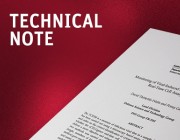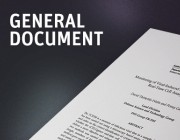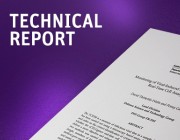This report provides an overview of battery technologies and related issues relevant to their use in military land vehicles.
Scientific publications

Our scientific output includes report literature
Our scientific and technical publications are an important vehicle for the dissemination of our work.
We have several goals for our publications:
- To communicate the results of the research program to clients and fulfil our reporting responsibilities to the Department of Defence.
- To record the results of our research program.
- To communicate the results of scientific research and technical information to Australian industry and academia.
- To increase awareness of and enhance the reputation of DSTG.
For enquiries about science and technical publications, or to request a publication please contact qfgt.erfrnepu.choyvpngvbaf@qrsrapr.tbi.nh
Latest scientific publications

Technical note
This note works through an example of switching between many coordinate systems using a modern matrix language that lends itself to describing arenas with multiple entities such as found in many Defence scenarios.

General document
This report provides such a horizon scan for Combat Service Support (CSS). Global trends and the results of science and technology literature scans across seven domains (power and energy, transportation, robotic and autonomous systems, materials and manufacturing, sensors, information and communication technology, and health technologies) are presented.

Technical report
An investigation into the use of the Instron ElectroPuls E3000 for the purpose of fatigue crack growth rate testing of structural materials was conducted.

Technical report
This report presents an overview of the theoretical concepts and definitions of uncertainty, and the uncertainty visualisation techniques that have been investigated to date, and how this work can be applied to support situation awareness and decision making in the Australian Defence Force’s Joint Operations Command.

Technical report
A comparative study of the two methods was carried out to ascertain whether the xCELLigence real-time cell analysis (RTCA) platform could be used to deliver a more objective and robust measure of TCID50.

Research report
A novel wavelet-based sparse signal representation technique is used to separate the main and tail rotor blade components of a helicopter from the composite radar returns. The received signal consists of returns from the rotating main and tail rotor blades, the helicopter body, possible land or sea clutter, and other residual components, which may all overlap in time and frequency; and therefore conventional time and frequency separation techniques cannot be applied. A sparse signal representation technique is now proposed for this problem with the tunable Q wavelet transform used as the dictionary. The proposed algorithm is demonstrated using both simulated and real radar data (X and Ku-band), and is capable of extracting the components of interest successfully.

Technical note
This report outlines the results of a scoping study, subject matter expert discussions and workshop, and use case development for automated and autonomous systems for Combat Service Support.

Technical report
This report seeks to redress this and provide an overview reference document for armour designers and armoured vehicle capability acquisition and quality assurance engineers.

Technical note
The as-built out-of-circularity (OOC) deviations from a perfectly round shape and plate thickness variations of a cylinder that is subjected to external pressure are known to have a significant effect on the collapse strength and must be accurately represented in finite element analysis to obtain accurate results. Often it is necessary to interpolate measurements from a relatively coarse grid to a refined finite element model and methods that have wide general acceptance are Fourier series and bi-linear interpolation. These methods have been implemented in an Excel spreadsheet to produce node and element data that can be used directly in the Strand7 finite element package, but the methods employed are suitable for other software as well.

